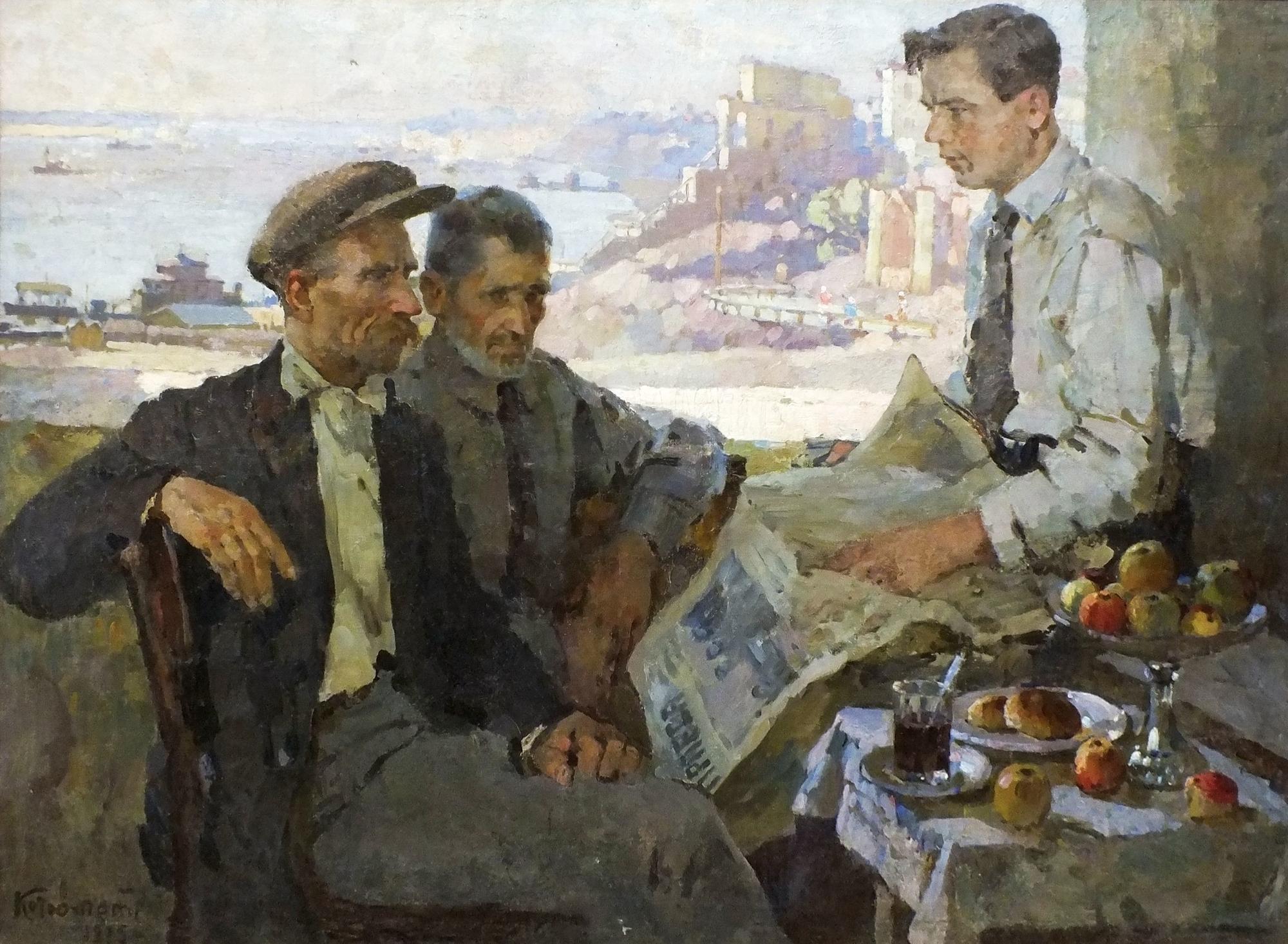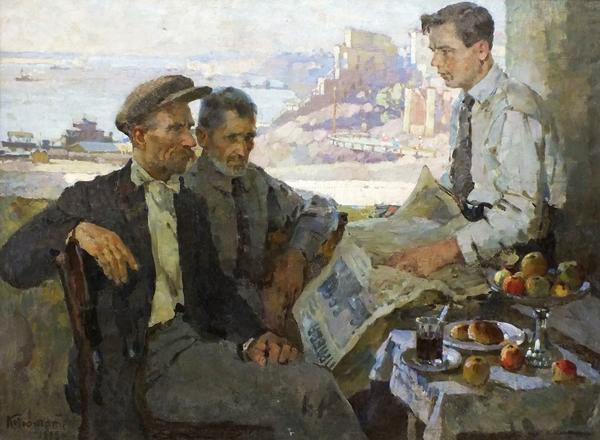The pupil proved himself in the classroom. With his graduation work he even earned the right to a pension trip to Italy. However, the revolution prevented those plans from being realized.
Kotov met October 1917 in his homeland. He was enthusiastically involved in the social life of the country and for the first time actively participated in the creation of an art gallery in Astrakhan.
In 1922 he left for Moscow, where he became a member of the Association of Artists of Revolutionary Russia (AHRR) – the largest association of Soviet artists of the realistic direction, which advocated the revival of a large ideological content of painting during the period of heated struggle between realists and representatives of avant-garde movements.
During this period the artist worked a lot in the historical genre. His works are devoted to events from the history of the revolutionary movement and civil war.
The heyday of Kotov’s creative work fell on the 1930s. At that period, he was doing a lot of industrial landscaping. Visiting a lot of famous construction sites of the five-year plan. Among them were Donbas, Kuznetskstroi, Red Sormov. He reflected the atmosphere of grandeur and majesty of socialist construction in his works Kuznetskstroy. Domna No. 1 and Stern Shipyard.
By the end of the 1930s, the artist began to specialize in portraiture. The main characters in his paintings are workers engaged in building a new world. He creates colorful portraits of carpenters, fitters, miners, builders and other representatives of working professions.
During the war, he was engaged in the publication of the ‘TASS Window’ in the evacuation in Penza. In the post-war period he created a series of portraits of Soviet military leaders: Georgy Zhukov, Konstantin Rokossovsky and others. He taught a lot. In particular, he taught courses at the Lomonosov Moscow Art Institute. V.I. Surikov.







